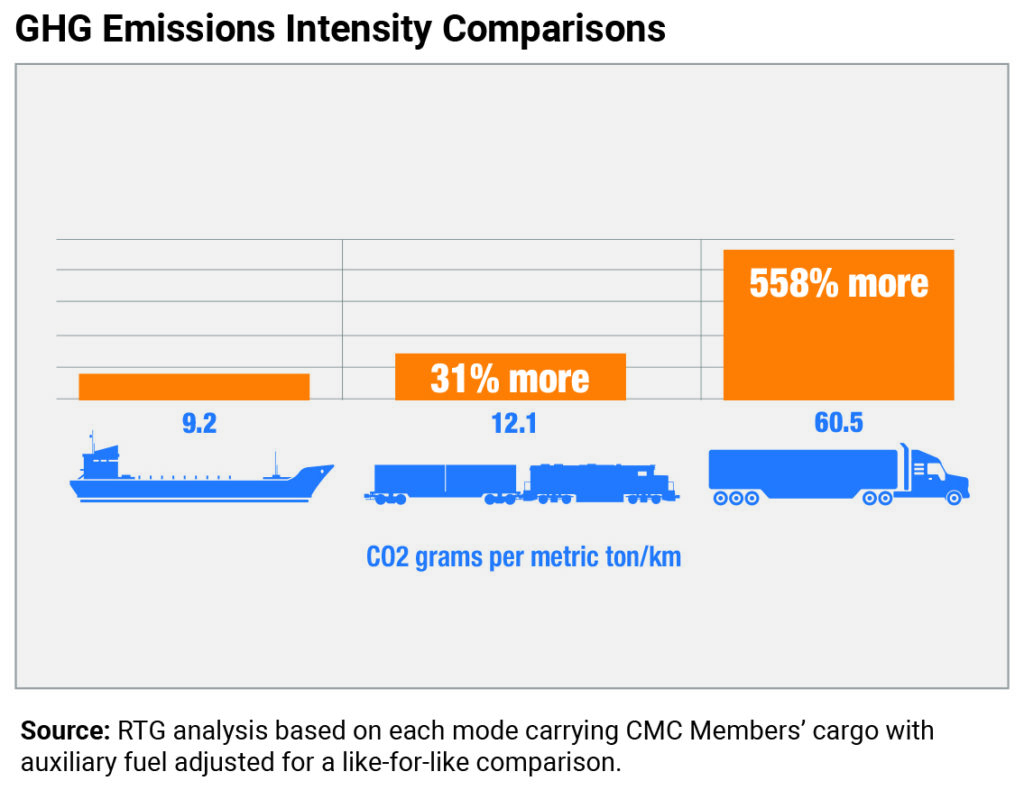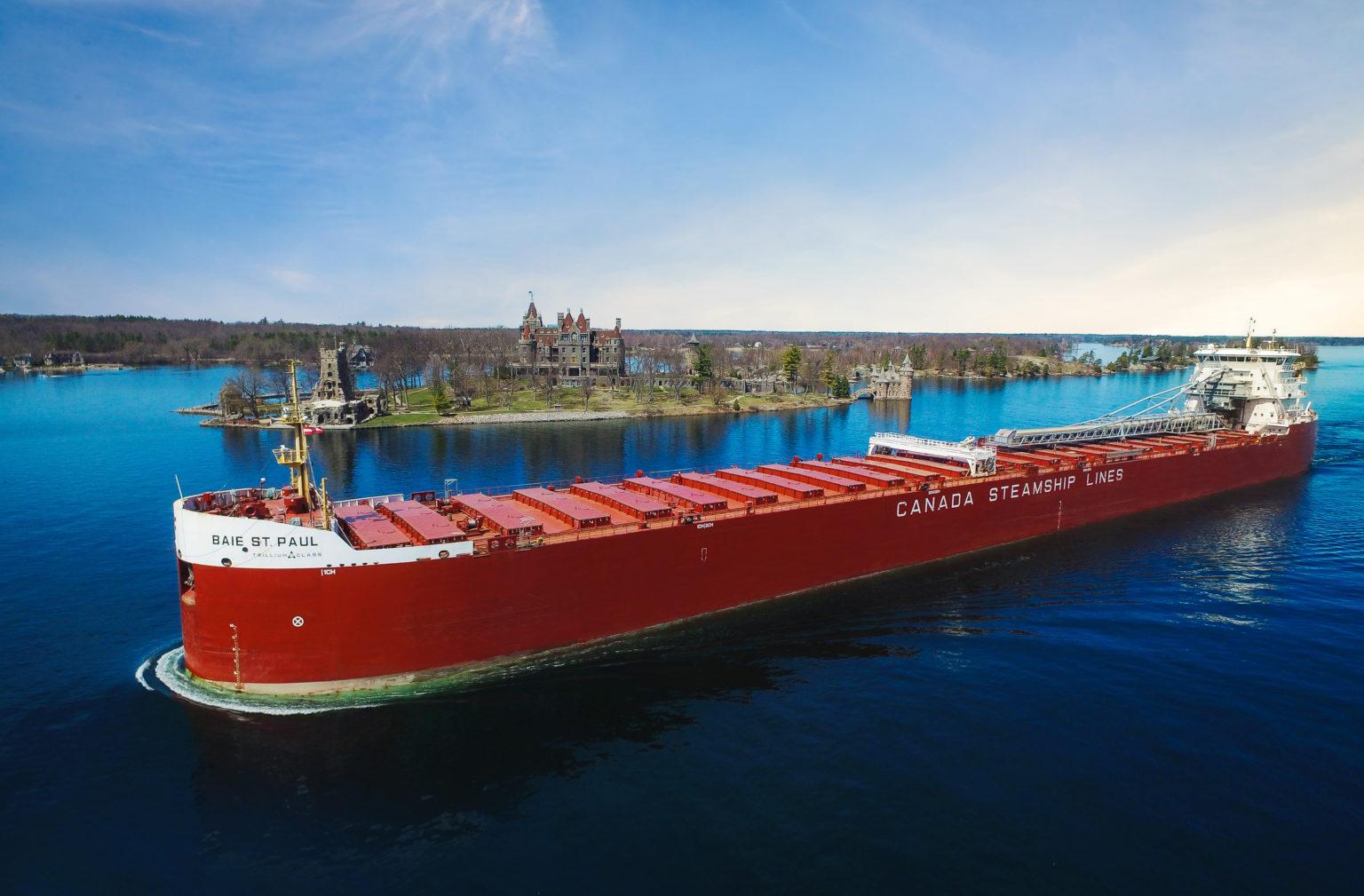
Canadian ship operators are pulling out all the stops to reduce their carbon emissions with new alternative fuel trials and improved ship designs.
Canadian ship operators are pulling out all the stops to reduce their carbon emissions with new alternative fuel trials and improved designs for new ship construction.
In 2021, Montreal-based CSL Group will be trialling biofuel on eight vessels in its Canadian fleet for the bulk of the Great Lakes-St. Lawrence shipping season. The pilot project comes following positive results from using 100% marine biofuel to operate the CSL Welland and the Rt. Hon. Paul J. Martin in September and October of 2020. The fuel is made from a diverse mix of resources such as recycled cooking oil, soybean oil and animal fats.
“The results were incredible,” says Allister Paterson, Executive Vice-President and Chief Commercial Officer for CSL Group. “There were no technical issues. It’s a drop-in fuel so you don’t have to change any of the equipment.”
The initial results show an estimated 80% lifecycle reduction in GHG emissions compared to using marine diesel oil. SOx emissions were so low that they were unmeasurable. When compared to petroleum-based fuels, particulate matter also decreases by 47%, thereby contributing to improved air quality and less pollution.
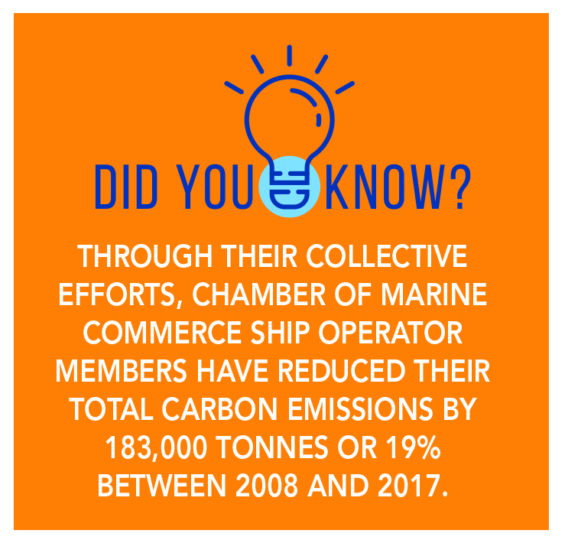
Biofuels cost more than marine diesel oil. For the test, CSL and its suppliers are absorbing the extra cost rather than passing it along to customers. In the long-term, Paterson says the cost of biofuels would need to be offset by a carbon trading plan to make it economical.
Paterson adds that if life-cycle analysis, which accounts for inputs and outputs associated with feedstock production through to biofuel end use, is used to calculate carbon reductions then it’s possible that CSL could beat Canada’s 2030 target to reduce GHG emissions by 30% compared to 2005, during its 2021 test.
The International Maritime Organization has a goal to reduce global marine shipping’s greenhouse gas (GHG) emissions by at least 50% by 2050, regardless of trade growth – but that target will require further development and deployment of new zero-carbon technologies and propulsion systems, such as green hydrogen and ammonia, fuel cells, batteries and synthetic fuels produced from renewable energy sources.
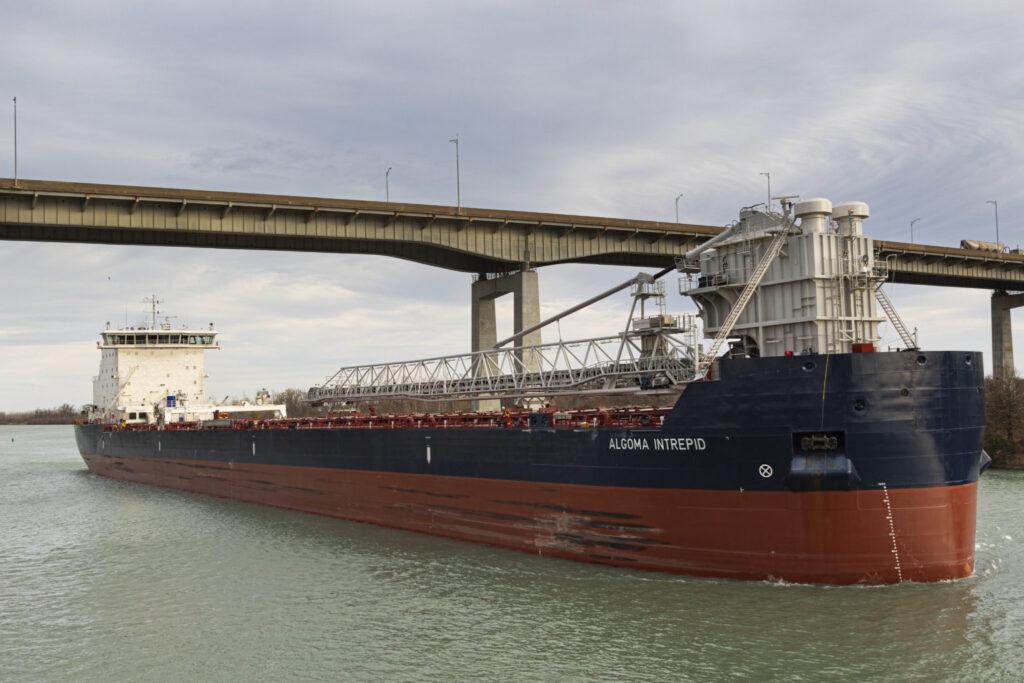
The Algoma Intrepid sails in the Great Lakes. Photo Credit: Bill Salton
St. Catharines-based Algoma Central Corporation has invested over $500M CDN over the last several years to build 10 new energy efficient vessels for the Great Lakes trade.
These Equinox Class vessels have been shown to be 40% more energy efficient than older laker vessels and they emit much less GHGs to carry more cargo.
“We continue to refine the design of our Equinox Class vessels, improving performance in several areas with each new arrival. One of the most notable is increased cargo carrying capacity, which reduces our GHG produced per ton kilometre while increasing operational efficiency both for Algoma and its customers. The Algoma Intrepid, a new River Class self-unloader, was delivered in 2020. The Captain Henry Jackman, a new gearless bulker, is scheduled for delivery mid-2021,” says Dave Belisle, Algoma’s Manager of Vessel Performance.
“In our on-going efforts to optimize fuel consumption we have also implemented new performance monitoring and control systems across the fleet and continue to pursue GHG reduction initiatives,” he adds. “The performance monitoring system allows us to identify best practices in the fleet, which crew champion and share.”
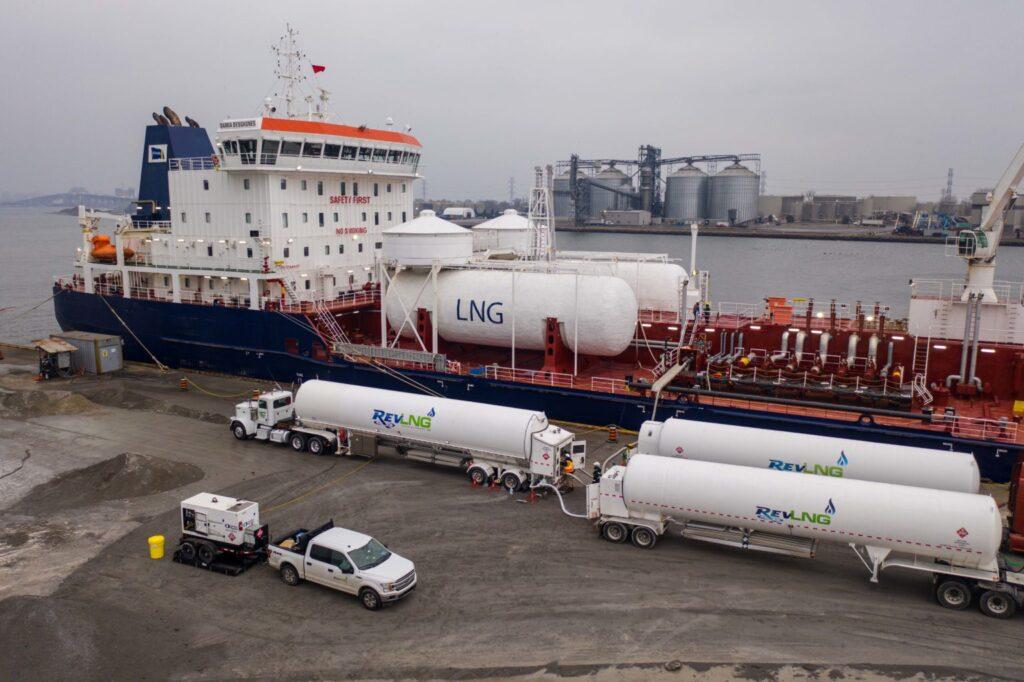
The MV Damia Desgagnés refuels with LNG at the Port of Hamilton.
A strategic partnership between the Hamilton-Oshawa Port Authority and REV LNG to refuel marine vessels that stop at Hamilton port with LNG will continue in 2021.
In December 2020, the MV Damia Desgagnés was the first vessel ever to refuel with LNG in the Great Lakes after docking at the Port of Hamilton’s Pier 22 before departing for Detroit. A mobile transfer station moved the fuel from truck to the vessel.
Pennsylvania-based REV LNG presided over the commercial and technical development of the project, LNG transportation and all shore-side operations. Their partner Pivotal LNG supported the project with its expertise and LNG supply from the recently operational Towanda Liquefaction and Storage Facility, located in Bradford County, Pennsylvania.
The pilot project is a major milestone in the energy evolution of the Great Lakes marine shipping industry. Up until now, the only LNG capacity at ports in Canada existed along the west coast in B.C. and the St. Lawrence River in Montreal and Quebec City. Ian Hamilton, CEO of HOPA Ports, says: “Our motivation is to support sustainable and continuous improvement in greenhouse gas reductions by providing more service options for the shipping industry. We see LNG as one of the many ways to address this problem.”
LNG is a cleaner alternative to conventional oil-based bunker fuel, which can achieve GHG reductions in the entire well-to-wake lifecycle by up to 21 per cent. It also improves air quality by eliminating 100 per cent of sulfur (SOX), 90 per cent of NOX and all particulate matter. Hamilton says that the December refuelling “worked perfectly” in terms of efficiency and following all safety protocols and that further refuelling pilots during the 2021 season will help them determine whether the port should invest in more permanent infrastructure to support the initiative.
“The real driver is demand. With the ability to now supply LNG, we see it as an opportunity to attract LNG-fuelled ships that have not come into the system because of a lack of fuelling options.”
Based in Quebec City, Desgagnés has been one of the early Canadian adopters, investing heavily in R&D and innovation across its fleet to reduce emissions.
“Our LNG fueled fleet has now expanded to five Canadian flagged tankers all operating in the Great Lakes, St. Lawrence Seaway system, Eastern Canada and U.S. as well as the Canadian Arctic,” says Jacques Beauchamp, President, Petro-Nav Inc. (a subsidiary of Desgagnés). “We are proud to be leaders in energy efficient, low emission, low carbon marine transportation. We are especially excited to participate with the Port of Hamilton and Rev LNG in this first marine LNG bunkering location in the Great lakes.
